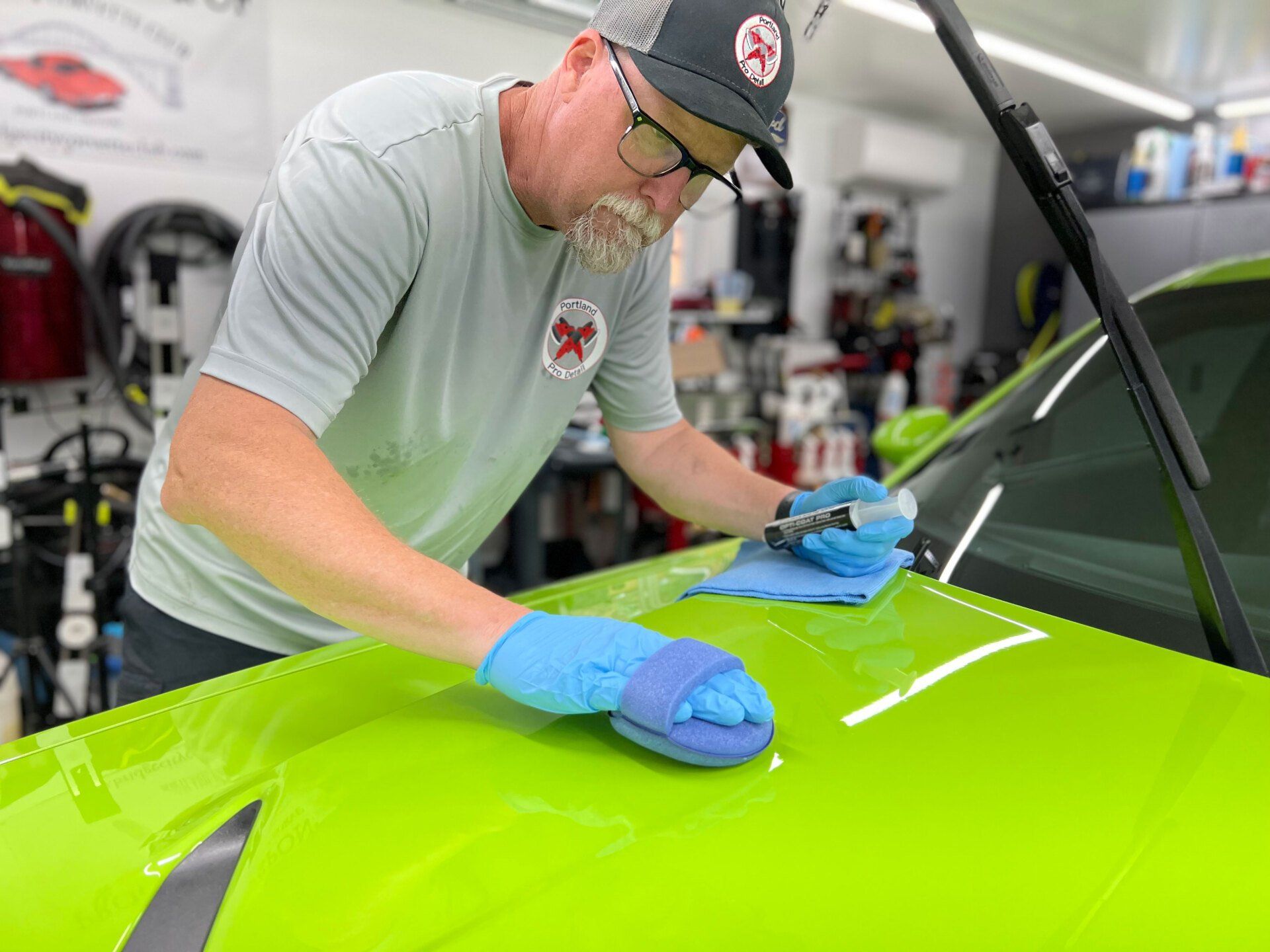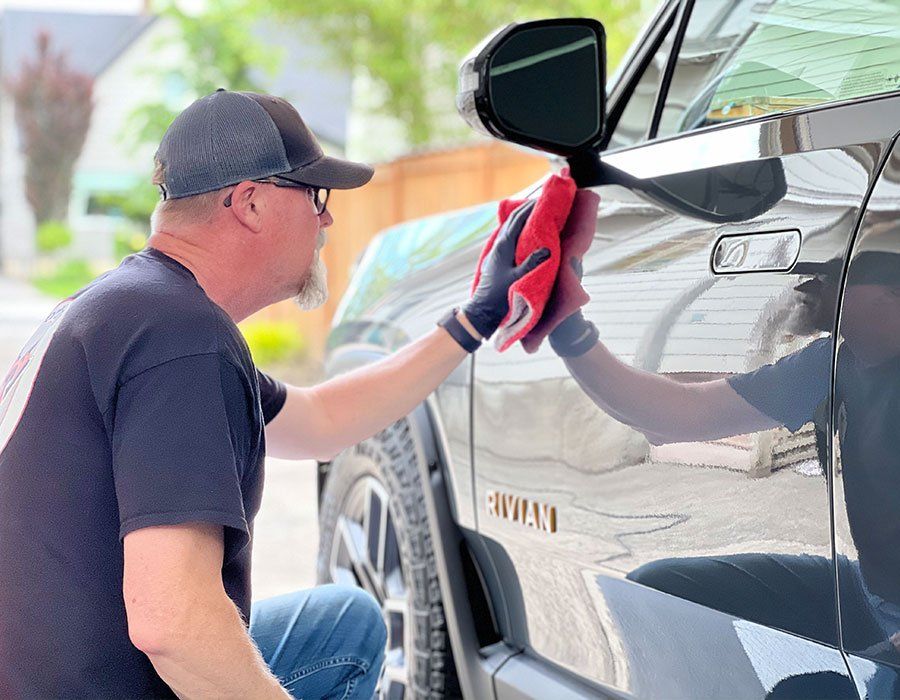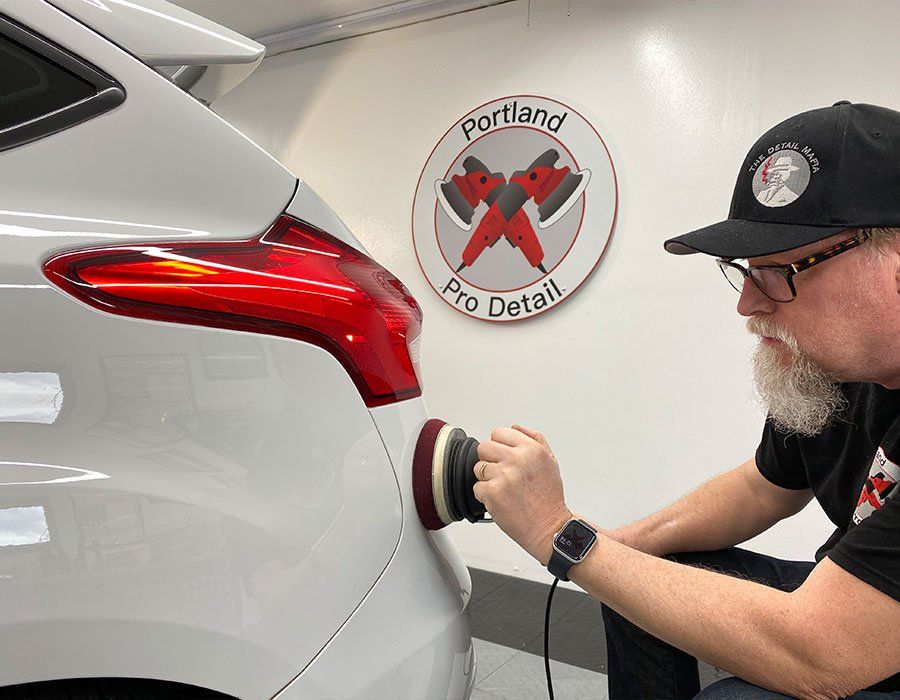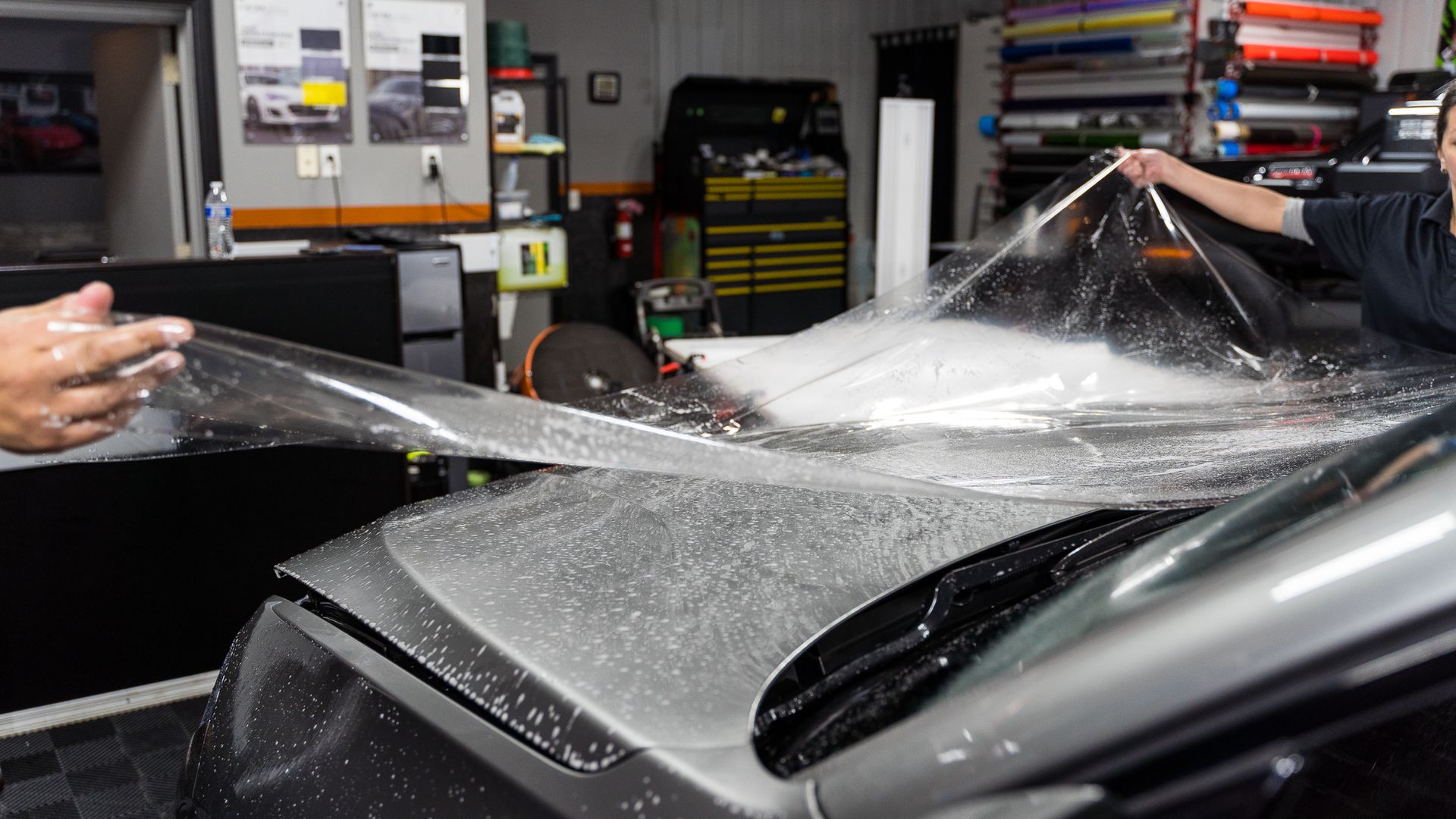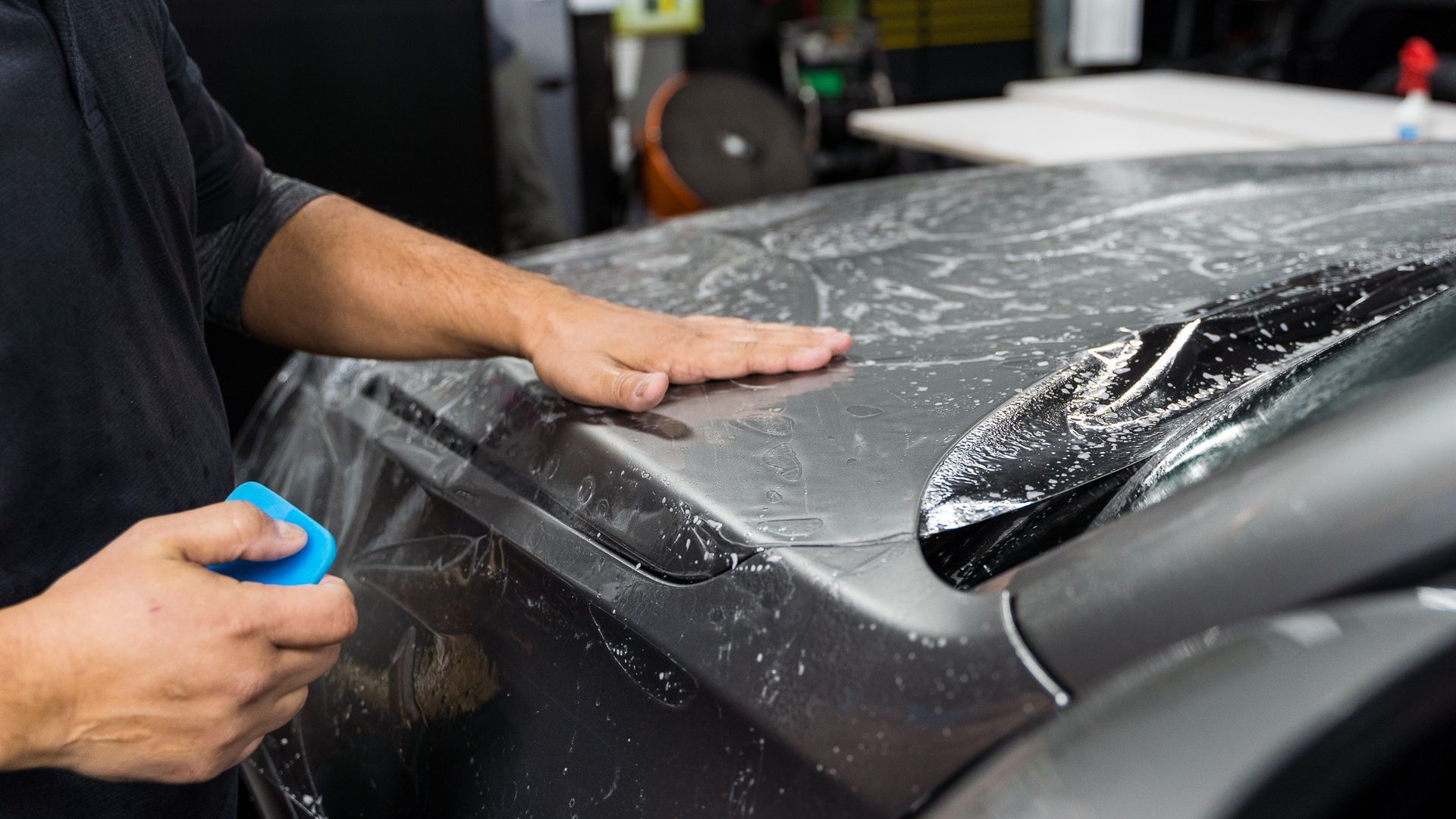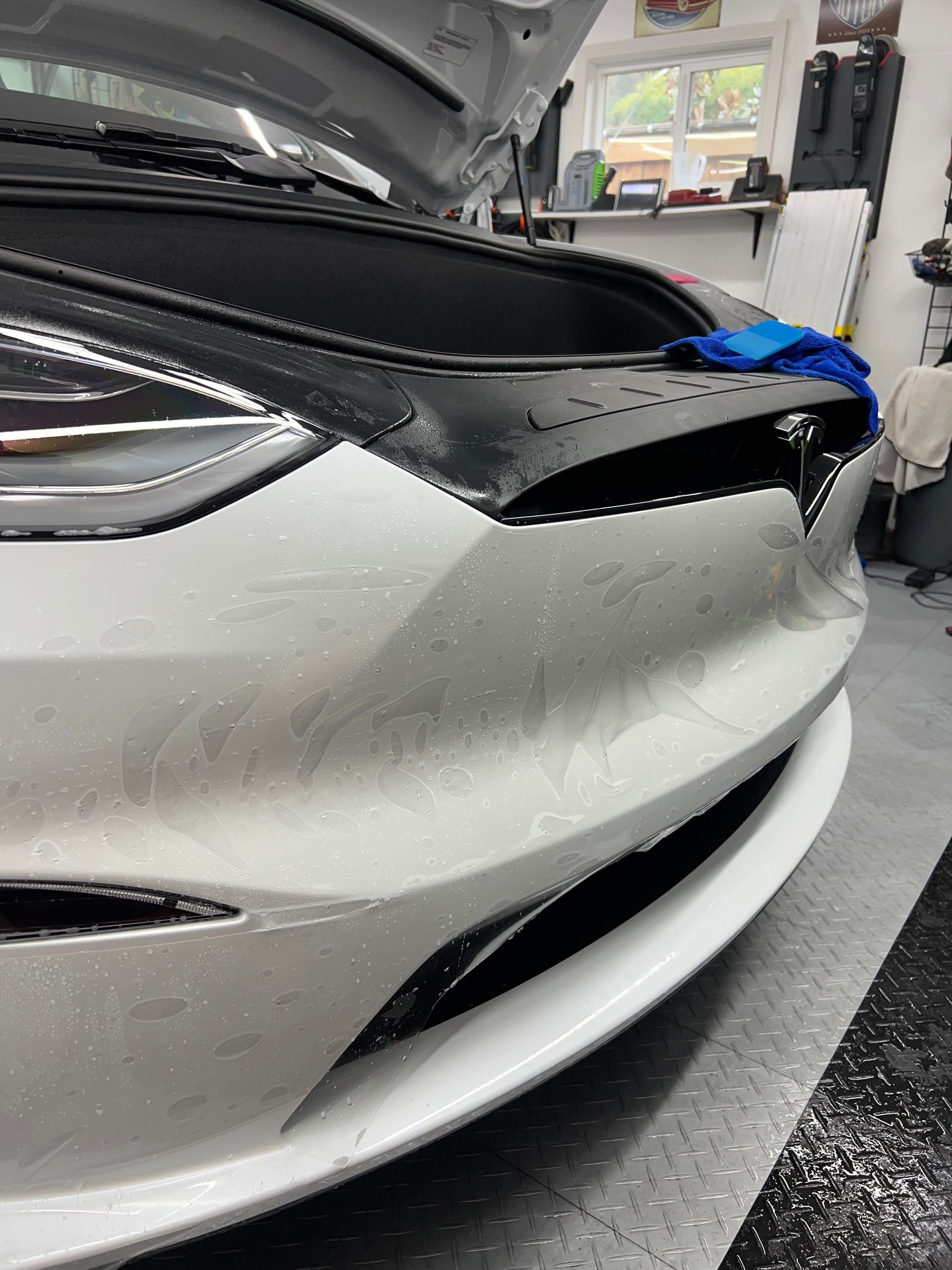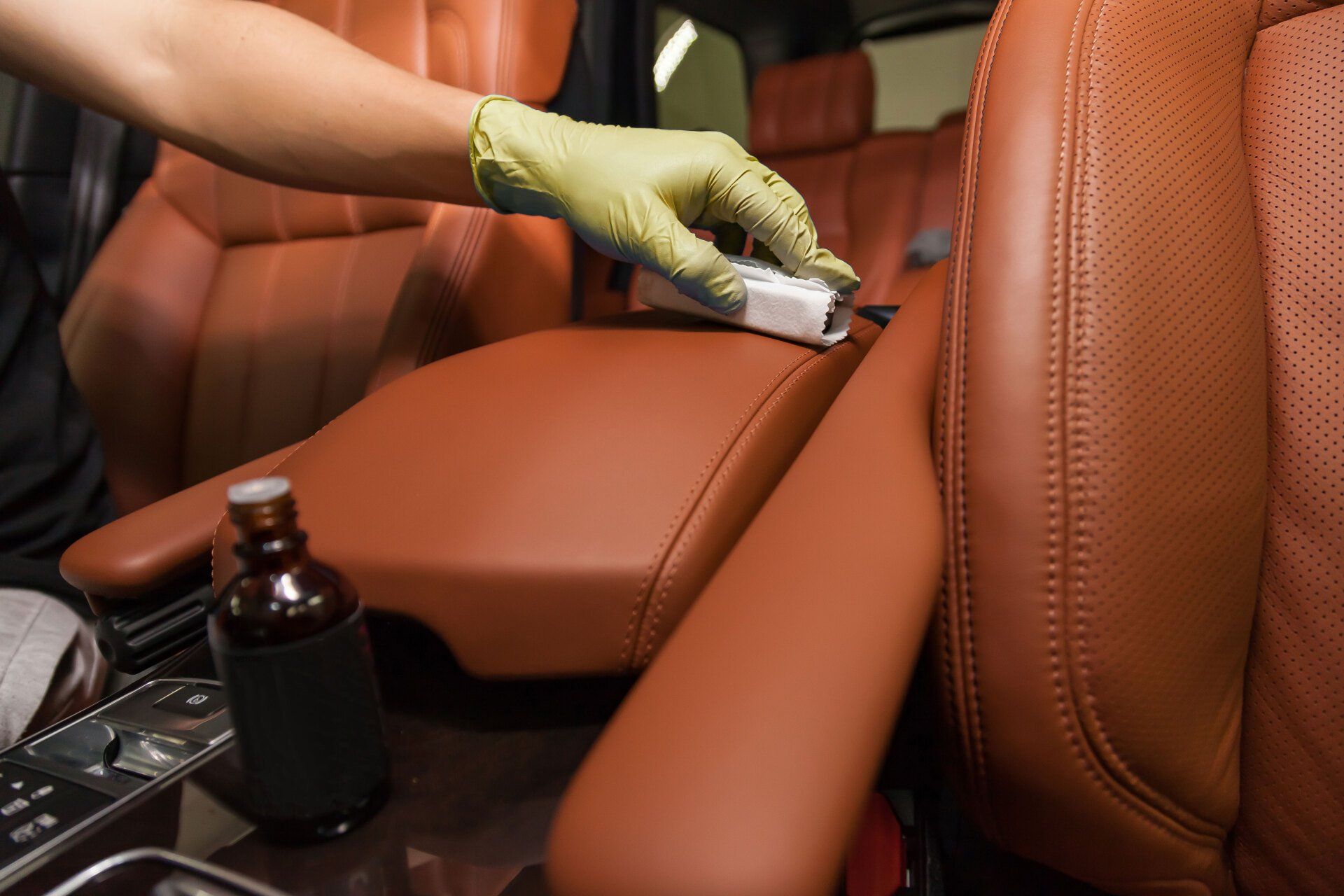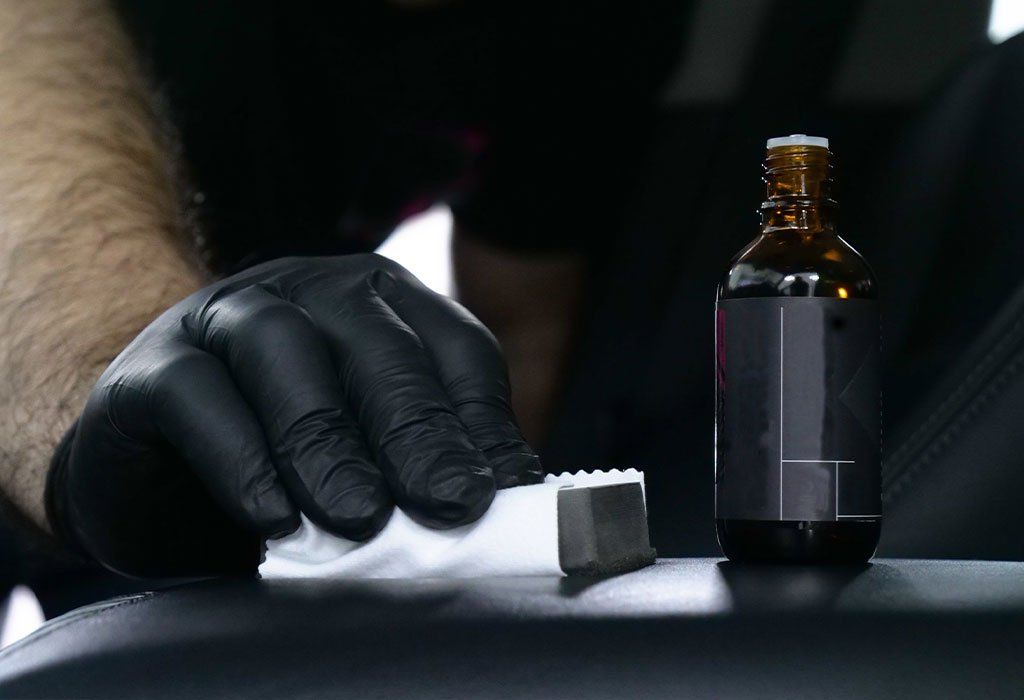The Self-Healing Properties of PPF: How It Works in Automotive Protection
CALL (503) 444-7415
When it comes to protecting your car’s paint job, you might think the best defense is a good offense—like avoiding rough roads or tree-lined paths. But what if there was a way to shield your ride from everyday wear and tear without even breaking a sweat? Enter Paint Protection Film (PPF), an innovation that's like putting a protective skin on your vehicle. This clear, tough layer does more than just keep scratches at bay; it even has self-healing abilities that allow minor scrapes to disappear with a little heat. If you've ever worried about how to keep your car looking new amidst life's little accidents, PPF could just be the answer you're seeking. Let's dive into how this remarkable film works and what makes it such an essential investment for car owners today.
The self-healing properties of Paint Protection Film (PPF) are made possible by special elastomers within the film that reflow into their original shape when exposed to heat. This means that minor scratches and swirl marks can be smoothed out through the natural heat from sunlight or by using a heat gun, allowing the film to maintain its clarity and protect your vehicle's paint over time.
The Basics of Paint Protection Film
Paint Protection Film, or PPF, is not just any ordinary material; it's a transparent shield made from advanced thermoplastic urethane. This thin yet durable film adheres to the painted surfaces of your vehicle and serves as a frontline defense against external threats. Imagine driving down a gravel road or being on a highway during rush hour where small rocks, bugs, and even tree sap lurk at every turn. PPF takes on these challenges with resilience, minimizing the risk of scratches and chips that can mar the appearance of your car.
More specifically, PPF is engineered to absorb impacts from minor debris that your car encounters daily. Picture it acting like a superhero cape, swooping in to protect your vehicle from those small missiles that could cause an unsightly blemish on the surface of its beautiful paint job. But there's more to PPF than just keeping your car looking good; it also provides indisputable long-term benefits.
Beyond aesthetics, PPF works diligently to combat environmental factors that would otherwise fade or damage your vehicle's finish over time. One of its key advantages is its ability to block up to 99% of harmful UV rays—those invisible rays that lead to fading and oxidation. This protective quality ensures that your car maintains its fresh-off-the-lot look for years rather than succumbing to sun damage prematurely.
Additionally, many high-end PPF products come equipped with self-healing properties. This means that upon experiencing minor abrasions, the film has the capability to "heal" itself when exposed to heat. Whether it's warmth from the sun or simply warm water, those small scratches can disappear remarkably fast, restoring the smooth surface without costly repairs.
This innovation not only saves you from frequent trips back to the body shop but also keeps your vehicle looking pristine effortlessly. According to industry trends, self-healing films have become increasingly popular among car enthusiasts. It’s noteworthy that approximately 85% of high-end vehicle owners in the U.S. now opt for PPF installation precisely for these reasons.
Considering its protective capabilities alongside home care considerations will enhance your appreciation for this exceptional automotive feature. However, it’s essential to keep in mind that while PPF offers substantial protection, it does have limitations. While perfect for shielding against minor
scratches and small chips, it can’t combat more severe damage—like deep gouges or substantial impacts—that may affect both the film and the underlying paintwork. Therefore, maintaining regular inspections and ensuring professional installations are critical components for maximizing its lifespan. As we uncover more about the intricate structure of this remarkable film, we'll gain insights into how it stands strong against wear and tear over time.
Composition and Layers of PPF
At the heart of PPF's efficacy lies a carefully constructed multi-layer system, each layer playing a pivotal role in enhancing the film's overall performance. The top coating is the first layer you encounter. This transparent shield is typically crafted from elastomeric polymers, known specifically for their self-healing properties. Minor scratches don’t just mar the surface; instead, they possess the ability to absorb impacts and return to their original form when exposed to heat—whether from direct sunlight or a heat gun. It's fascinating how something so simple can do such remarkable work!
Beneath this protective shield is the polyurethane layer, where the magic truly lies. Polyurethane serves as the backbone of PPF, delivering robust resistance against impacts, abrasions, and environmental corrosion. This substance is not only resilient but also notably flexible, allowing it to stretch and fit snugly around your vehicle’s unique contours without compromising its integrity. Its adaptability means it can withstand the rigors of daily driving, contributing to the film’s longevity.
As you consider the installation of PPF, it's important to recognize the robustness of these materials; durability isn’t merely an afterthought—it’s built into every layer. The final layer is perhaps one of the most vital—the adhesive layer. This powerful adhesive is designed to secure the film firmly to your vehicle’s paint while ensuring that it can be removed cleanly without damaging the underlying finish. Think of it like a strong bond that keeps everything together without leaving a trace behind when it’s time for replacement or removal.
Typically, PPF measures around 8 mils thick (about 0.008 inches). This thickness strikes an excellent balance between providing significant protection while maintaining the flexibility needed for application on intricate surfaces—such as those sleek curves found on high-performance vehicles. With this understanding of PPF's layered composition, you can better appreciate why proper installation is paramount. A successfully applied PPF not only enhances your car's aesthetics but also fortifies its defenses against everyday wear and tear, preserving its value over time while giving peace of mind to any conscientious vehicle owner.
As we further explore this topic, it's essential to examine what truly activates these incredible self-healing mechanisms and how they function in restoring your vehicle’s appearance.
Understanding the Self-Healing Process
One of the most impressive aspects of self-healing PPF is its ability to recover from minor scratches and blemishes, which keeps your vehicle looking sharp and new for years. At the heart of this technology lies a unique combination of thermoplastic polyurethane (TPU) materials, specially engineered to respond to heat. When PPF sustains damage, the elastomers within the film react to warmer temperatures, allowing them to flow back into their original shape. This means that scratches often disappear without a trace—almost like magic!
The healing mechanism can be activated quite simply through everyday elements, such as sunlight or hot water. For example, when a car parked in the sun heats up, you could witness minor swirl marks or light scratches smooth out over time. In fact, these self-healing capabilities can recover up to 90% of the film's surface after minor scuffing when exposed to the right conditions. It’s an adaptable material; with minor upkeep, it ensures your vehicle remains visually appealing without constant touch-ups. The healing temperature for most self-healing PPFs ranges from 140°F to 160°F (60°C to 71°C), making it accessible to heal through natural environmental factors like sunlight.
Think of this system as akin to memory foam: just as the mattress springs back into shape after pressure is removed, so does the surface of self-healing film return to its original state when coaxed by warmth. This fascinating analogy illustrates how PPF’s structure is designed for resilience—it’s smart engineering that offers practical benefits. However, it’s essential to note that while PPF does offer remarkable protection against minor abrasions, it isn’t invincible. More severe damage, such as deep scratches or chips caused by road debris, will require different repairs or replacements. Proper care can greatly extend the durability and effectiveness of this advanced film.
Understanding these self-healing properties not only highlights the advantages but also prepares you for what comes next regarding the proper techniques needed to ensure effective application and maintenance.
Installation Techniques for PPF
The process of applying PPF involves several key steps, each designed to enhance the film's effectiveness and longevity. First and foremost is prep work, which cannot be overstated. A clean surface is essential, as any dirt, grease, or leftover wax can create barriers that prevent the film from adhering properly. This might mean spending extra time cleaning the vehicle with isopropyl alcohol or a specialized cleaner to achieve a pristine surface—often aiming for a cleanliness level of 99% or higher.
Step-by-Step Professional Installation
After the vehicle surface is squeaky clean, the next step involves tailored cutting. Here’s where skilled professionals truly shine; they utilize plotters to precisely cut the film according to the car's make and model. This guarantees that every curve, nook, and cranny of your vehicle receives adequate protection without excess material flapping in the wind. Having this tailored fit not only helps with aesthetics but also enhances durability by preventing edges from lifting over time.
Once you have your custom-cut film ready, it's time for application, where expertise matters most. During application, it’s common practice to use a slip solution made from soap and water. This allows for repositioning the film during installation without risking damage to either the film or your vehicle's finish. Think of it like preparing a delicious sandwich; if you start with dry bread, anything you add on will stick awkwardly. With a little lubrication, everything slides into place perfectly!
Next comes squeegeeing, which sounds simple but requires skill. Using a squeegee helps remove trapped water and air bubbles from beneath the film, ensuring a smooth finish free from imperfections. You'll want to apply consistent pressure while watching for any potential issues so they can be addressed right away. Finally, once the film is securely in place, there’s one last vital step: curing time. Allowing the film to cure for at least 24 hours—or better yet, 48 hours—ensures optimal adhesion. During this time, moisture evaporates, and the film fully adheres to your vehicle's surface.
Proper installation maximizes aesthetic appeal and significantly enhances the protective benefits of your PPF investment. As we explore further, understanding how effective this protective measure really is will shed light on its true value for vehicle owners.
Evaluating the Effectiveness of Self-Healing
The effectiveness of self-healing Paint Protection Film (PPF) is not just a marketing gimmick; it's backed by research and user experiences. A noteworthy study from the University of Michigan established that high-quality PPF can fully self-heal from minor scratches within 30 minutes under direct sunlight.
That means if you're driving down a gravel road and small stones kick up, you’ll find that those superficial scratches can disappear before your eyes, almost like magic. This feature gives users an enhanced peace of mind knowing they can protect their vehicles effortlessly. In contrast, lower-quality films tend to fall short. These cheaper alternatives may only exhibit partial healing, leaving noticeable marks that can be unsightly and irritating for the meticulous car owner. The difference in performance underscores the importance of investing in higher-quality materials when it comes to automotive protection. When you pay for premium PPF, you're not just buying a product; you’re investing in long-term care for your vehicle’s finish.
Exploring Additional Benefits of PPF
One key benefit is UV protection. When your car is exposed to sunlight day after day, the paint can slowly suffer from fading and oxidation. This is especially true for those who live in sunny climates where UV rays are more intense. With PPF applied, you create a barrier that helps shield your vehicle’s surface from these damaging rays, ensuring that its vibrant color remains intact much longer.
In addition to protecting against UV rays, PPF also offers chemical resistance. Think of those unfortunate instances when bird droppings or tree sap are left on your car’s surface for too long. Such substances can cause serious damage if not cleaned off promptly. PPF acts as a formidable shield against these corrosive elements and even harsh detergents that you may use during cleaning. By maintaining a protective layer, you're investing in the longevity of your paint job.
Another remarkable advantage is how PPF simplifies the process of maintenance. With this film installed, keeping your car clean becomes easier than ever. The smooth surface facilitated by PPF allows dirt and grime to slide off with minimal effort. This means fewer trips to the car wash, translating into savings both in time and money. For many car owners, this ease of maintenance can significantly reduce annual upkeep costs by as much as 30%, making it a practical choice alongside its protective benefits.
These multifaceted benefits underscore why PPF stands out as a highly valued investment for anyone aiming to preserve both the appearance and longevity of their vehicle. Ultimately, investing in Paint Protection Film can protect not just the exterior of your vehicle but also enhance its overall lifespan and aesthetics for years to come. Embrace the advantages that come with this innovative automotive solution.
Unbeatable Paint Protection Film in Portland, OR
Portland Pro Detail offers expert Paint Protection Film (PPF) services to keep your car’s finish safe from everyday wear and tear. Our high-quality PPF provides an invisible shield, guarding against chips, stains, and environmental damage while maintaining the sleek appearance of your vehicle. With years of experience and a commitment to precision, our team ensures a flawless installation that will extend the life of your car's paint. Contact Portland Pro Detail today to experience unmatched protection and keep your vehicle looking brand new for years to come.
Portland Pro Detail Blog


